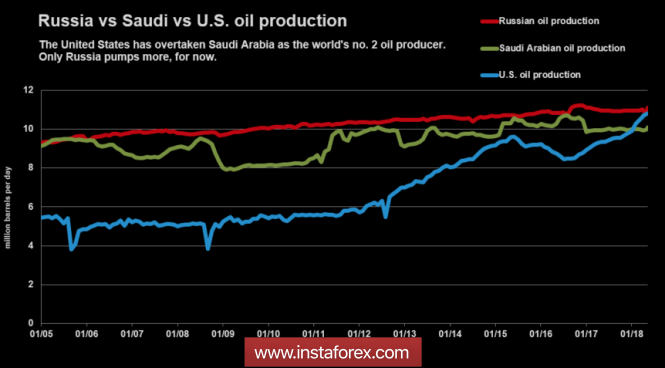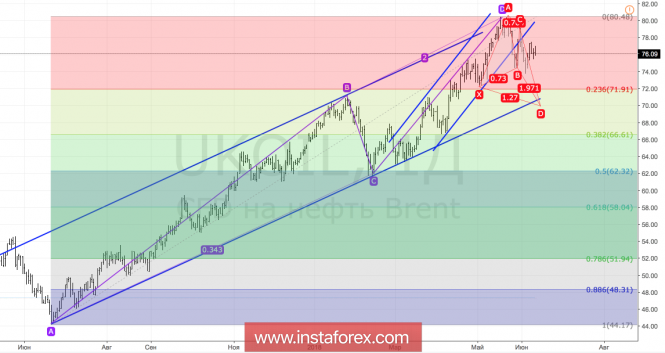
Improving global appetite for risk thanks to the historic meeting of the leaders of the United States and North Korea in Singapore and the reduction in volatility ahead of the OPEC summit on June 22-23 allowed the bulls for Brent and WTI to go counterattack. At the same time, few expect the oil to be able to rewrite May highs during the next 3-4 weeks at least. Unless Iran, which claims that the sanctions imposed on it and the extension of the Vienna agreement will lead to an increase in the price of black gold to $ 140 per barrel. However, this figure is more likely from the realm of fantasy.
Obviously, thanks to the agreement reached in 2017 between the cartel and Russia to cut production by 1.8 million b / s, oil was pulled out of the abyss. Nevertheless, the growth of Brent to $ 80 per barrel became the basis for talking about prices too high for the world economy. In such conditions, global demand is declining, which is a "bearish" factor for black gold. Thus, it becomes clear why Moscow and Riyadh not only talked about increasing production but also took the first steps in this direction.
Bloomberg, citing a competent source, who asked to remain anonymous, said that in May Saudi Arabia's production increased by 162,000 b / d to 10.03 million b / d. In the summer months, the country of the traditional increases the figure due to seasonally strong domestic demand. Russia in early June reached 11.09 million b / s, the highest level in the last 14 months. It exceeds the figure stipulated with OPEC at 10.95 million b / s. According to Bloomberg experts, the indicator could grow by another 215-500 thousand b / s. Together with the growth in production in the US to record levels of 10.8 million b / s laid the foundation for the development of correction for Brent and WTI.
The dynamics of oil production by the largest producer countries

On the other hand, the activity of Moscow and Riyadh may be due to the inability to increase production to Iran-ridden Venezuela and torn by internal contradictions by Venezuela. These two countries together with Iraq are determined to prolong the Vienna agreements. It is understandable: if you are not able to increase production, when everyone else does it, you will quickly lose your market share. Thus, the summit of June 22-23 is likely to be filled with heated discussions.
However, it is one thing to have a desire to increase production, the other - opportunities. Morgan Stanley believes that support for the "bulls" for Brent and WTI can have: a balance of supply and demand, a reduction in global reserves and limited reserve capacity. According to the IEA, for OPEC they were 3.47 million b / s in April. The US Energy Information Administration believes that the issue should be about 1.91 million b / s.
Technically, until the quotes of the North Sea grade are above $ 70 per barrel, oil continues to be in the "bulls". Actual patterns are "Splash and reversal with acceleration" and "Perfect butterfly". They both point to the growing risks of correction development.
Brent, the daily chart
